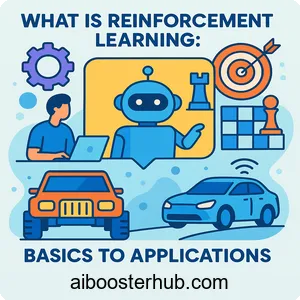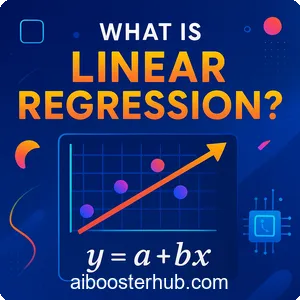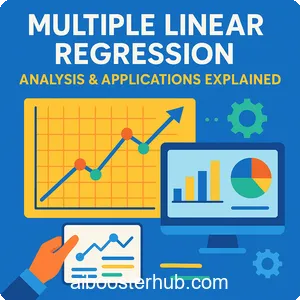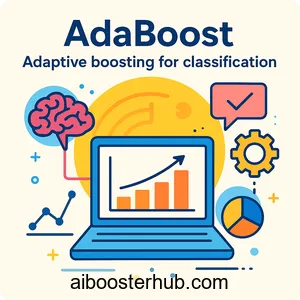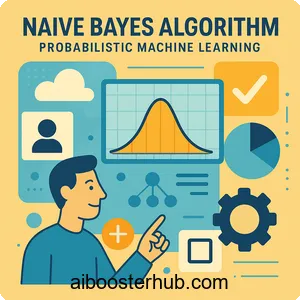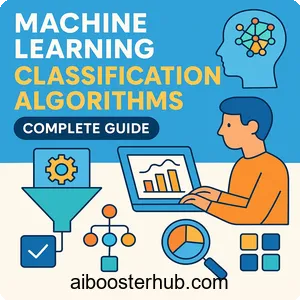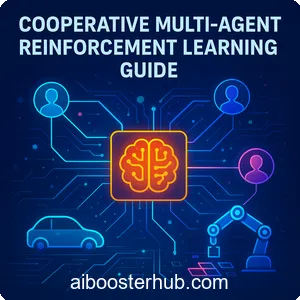Agentic Reinforcement Learning for Large Language Models Opening
The emergence of large language models (LLMs) has fundamentally transformed the landscape of artificial intelligence over the past decade. These systems now demonstrate remarkable capabilities in language understanding, reasoning, and generation, enabling applications ranging from complex information synthesis to creative problem-solving. However, as LLMs continue to scale in size and sophistication, a fundamental challenge has surfaced: ensuring that these powerful systems generate outputs that are not only coherent and contextually appropriate, but also reliably aligned with human values, intentions, and societal norms.
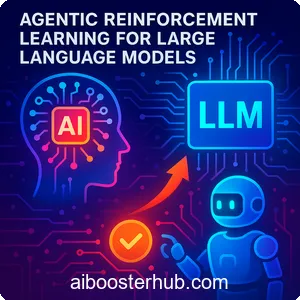
Traditional supervised learning approaches, while effective for initial training, prove insufficient for capturing the nuanced spectrum of desirable model behavior in real-world deployment scenarios. This limitation has prompted the research community to explore reinforcement learning frameworks—particularly when integrated with agentic capabilities—as a more flexible and robust mechanism for fine-tuning and controlling LLM behavior. Agentic reinforcement learning represents a convergence of two powerful paradigms: the adaptive learning mechanisms of reinforcement learning and the autonomous decision-making capabilities of agentic systems.
Content
Toggle1. Introduction
Reinforcement learning (RL) for LLMs marks a significant departure from conventional supervised learning methodologies. Rather than relying exclusively on static, human-annotated datasets, RL introduces dynamic feedback mechanisms that enable models to learn from outcomes, adjust their behavior based on reward signals, and progressively optimize their responses through iterative refinement. This approach acknowledges a fundamental truth: optimal model behavior often extends beyond what can be easily encoded in training data, requiring systems that can adapt to diverse contexts and learn from the consequences of their actions.
When reinforcement learning is coupled with the concept of agency—wherein models function as autonomous agents capable of making sequential decisions within complex, dynamic environments—we arrive at agentic reinforcement learning. This framework represents a significant advancement in how we conceptualize and train LLMs, moving beyond static response generation toward interactive systems that can reason, plan, and learn from feedback in a continuous cycle. By synthesizing these approaches, agentic reinforcement learning offers a pathway to creating AI systems that are not only more capable and controllable, but also more transparent in their decision-making processes and more adaptable to evolving requirements.
2. Understanding reinforcement learning fundamentals
What is reinforcement learning?
Reinforcement learning (RL) is a machine learning paradigm where an agent learns to make decisions by interacting with an environment. Unlike supervised learning, which relies on labeled examples, RL operates through a reward signal that guides the learning process. The agent observes the current state of the environment, takes an action, and receives feedback in the form of a reward or penalty, allowing it to refine its strategy over time.
The mathematical foundation of RL can be expressed through the Markov Decision Process (MDP), which consists of:
- States \((s \in S)\): The possible configurations of the environment
- Actions \((a \in A)\): The choices available to the agent
- Transition probabilities \((P(s’|s,a))\): The likelihood of moving from one state to another
- Rewards \((r(s,a))\): The numerical signal received after taking an action
The objective is to maximize the cumulative discounted reward:
$$V(s) = \mathbb{E}\left[\sum_{t=0}^{\infty} \gamma^t r_t | s_0 = s\right]$$
where \(\gamma\) is the discount factor that determines how much weight is given to future rewards compared to immediate rewards.
The role of value and policy functions
In reinforcement learning, two fundamental concepts guide the learning process. The value function \(V(s)\) estimates the expected cumulative reward from a given state under an optimal policy. The policy function \(\pi(a|s)\) determines the probability of taking a specific action in a given state.
Policy gradient methods, which form the backbone of many modern RL approaches, directly optimize the policy by computing gradients of the expected return with respect to policy parameters. The basic policy gradient theorem states:
$$\nabla J(\theta) = \mathbb{E}[\nabla_{\theta} \log \pi_{\theta}(a|s) Q^{\pi}(s,a)]$$
where \(J(\theta)\) is the objective function, \(\pi_{\theta}\) is the parameterized policy, and \(Q^{\pi}(s,a)\) is the action-value function.
Exploring key reinforcement learning algorithms
Modern reinforcement learning algorithms build upon these foundations. Proximal Policy Optimization (PPO) introduces a clipped objective function to prevent overly large policy updates, ensuring more stable training. Trust Region Policy Optimization (TRPO) uses a similar approach by constraining policy changes within a trust region. Actor-Critic methods combine policy gradient estimation with value function approximation, striking a balance between bias and variance.
For LLMs, these algorithms are adapted to work with neural networks, where the policy \(\pi_{\theta}(a|s)\) is represented by the model’s output distribution over tokens, and the reward signal comes from human evaluators or learned reward models.
3. RLHF: Bridging human feedback and model training
The emergence of RLHF as a paradigm shift
Reinforcement Learning from Human Feedback (RLHF) represents a revolutionary approach to aligning LLMs with human preferences. Rather than relying exclusively on human-annotated training data, RLHF leverages human feedback signals to guide the learning process. This technique has become the backbone of training systems like ChatGPT and other state-of-the-art conversational AI models.
The RLHF pipeline consists of three primary stages:
- Supervised fine-tuning: A base LLM is fine-tuned on a dataset of high-quality examples, where human annotators demonstrate desired behavior
- Reward model training: Human raters compare pairs of model outputs and provide preferences, which are used to train a reward model that can score model-generated responses
- Policy optimization: The LLM is fine-tuned using RL to maximize the reward signal, using algorithms like PPO
Training the reward model
The reward model \(r_{\theta}(x, y)\) takes a prompt \(x\) and a response \(y\) as input and outputs a scalar reward representing how well the response aligns with human preferences. During training, the model learns from pairwise comparisons where humans rank two candidate responses.
The Bradley-Terry model, commonly used for this purpose, models the probability that response \(y_1\) is preferred over \(y_2\) given a prompt \(x\):
$$P(y_1 \succ y_2 | x) = \frac{\exp(r_{\theta}(x, y_1))}{\exp(r_{\theta}(x, y_1)) + \exp(r_{\theta}(x, y_2))}$$
The reward model is trained to maximize the likelihood of observed human preferences in the training data. Once trained, this model can efficiently score new model outputs, providing a continuous signal for the RL training phase.
Policy optimization with reward signals
In the final stage, the LLM’s policy is optimized using the reward model’s feedback. The objective function typically includes both the reward signal and a KL divergence penalty to prevent the model from diverging too far from its original behavior:
$$L =
\mathbb{E}_{x \sim D} \left[
\mathbb{E}_{y \sim \pi_\theta(y \mid x)} \big[ r_\theta(x, y) \big]
– \beta \cdot \mathrm{KL}\big( \pi_\theta \,\|\, \pi_{\text{ref}} \big)
\right]$$
where \(D\) is the distribution of prompts, \(\beta\) controls the strength of the regularization, and \(\pi_{ref}\) is the reference policy before RL fine-tuning.
Real-world implementation example
Consider a practical scenario where we want to train a model to generate more helpful and harmless responses. First, human raters would provide demonstrations of ideal responses for various prompts. These examples form the supervised fine-tuning dataset. Next, raters compare pairs of model outputs and select their preferences. These preferences train the reward model.
Finally, using PPO, the model learns to generate responses that score higher according to the reward model. For instance, if a prompt asks for advice on a sensitive topic, the model learns to generate balanced, informative, and safe responses that human raters consistently prefer.
4. Agentic reinforcement learning for language models
What makes a language model an agent?
While traditional LLMs generate text in response to prompts, agentic LLMs take autonomous action within complex environments. They observe their surroundings, make decisions, execute plans, and adapt based on outcomes. Agentic reinforcement learning for LLMs extends standard RL techniques to handle the unique challenges of training language-based agents.
An agentic LLM operates through a decision-making loop: the model observes the current state and history, generates reasoning or plans, takes actions (which might include calling tools, asking questions, or generating responses), and receives feedback that guides future behavior. This framework enables models to tackle complex, multi-step problems that require planning, tool use, and reflection.
The landscape of agentic reinforcement learning approaches
The landscape of agentic reinforcement learning for LLMs encompasses several complementary methodologies. Reflexion frameworks implement iterative refinement loops where agents generate responses, receive feedback, and use that feedback to improve subsequent attempts. Chain-of-thought prompting encourages models to reason step-by-step before providing answers. Verbal reinforcement learning provides agents with natural language feedback rather than scalar rewards, which aligns better with how humans naturally communicate preferences.
Structured approaches like hierarchical RL decompose complex tasks into subtasks, allowing agents to learn at multiple levels of abstraction. Tool-augmented agents learn not only to generate text but also to select and use external tools effectively. Multi-agent systems involve multiple language agents interacting to solve problems collaboratively.
Reflexion language agents with verbal reinforcement learning
Reflexion represents a particularly elegant approach to agentic RL for LLMs. In reflexion systems, agents don’t simply execute actions once; instead, they engage in iterative cycles of execution and reflection. The agent generates an initial response, receives feedback, reflects on that feedback, and generates an improved response.
Verbal reinforcement learning, which is central to reflexion, provides feedback in natural language rather than numerical scores. This approach has several advantages: it’s more interpretable, allows for more nuanced guidance, and aligns with how humans naturally provide feedback. For example, instead of receiving a scalar score of 0.7 for a response, an agent might receive feedback like “Your response was partially correct but missed an important detail about regulatory compliance.”
Consider an agent tasked with writing a comprehensive business proposal. In a reflexion loop:
- The agent generates an initial draft
- It receives feedback: “The draft is well-structured but lacks specific financial projections and competitive analysis”
- The agent reflects on this feedback and identifies the missing components
- It regenerates the proposal with the requested additions
- The cycle repeats until the feedback is satisfied
This iterative refinement process often produces higher quality outputs than single-pass generation.
Implementing agentic reinforcement learning
Here’s a simplified Python example demonstrating the core concept of an agentic RL loop with a language model:
import openai
from typing import Tuple
class AgenticLLMAgent:
def __init__(self, model_name="gpt-4", max_iterations=3):
self.model_name = model_name
self.max_iterations = max_iterations
self.reflection_history = []
def generate_response(self, prompt: str, context: str = "") -> str:
"""Generate a response from the language model."""
messages = [
{"role": "system", "content": "You are a helpful assistant."},
{"role": "user", "content": f"{context}\n{prompt}"}
]
response = openai.ChatCompletion.create(
model=self.model_name,
messages=messages,
temperature=0.7
)
return response.choices[0].message.content
def get_feedback(self, response: str, evaluation_prompt: str) -> Tuple[str, bool]:
"""Obtain feedback on the response."""
feedback_request = f"""
Evaluate this response: {response}
{evaluation_prompt}
Provide constructive feedback and indicate if the response is satisfactory.
"""
feedback = self.generate_response(feedback_request)
is_satisfactory = "satisfactory" in feedback.lower()
return feedback, is_satisfactory
def reflect_and_improve(self, prompt: str, feedback: str) -> str:
"""Use feedback to generate an improved response."""
reflection_prompt = f"""
Original task: {prompt}
Feedback received: {feedback}
Generate an improved response that addresses the feedback.
"""
return self.generate_response(reflection_prompt)
def execute_agentic_loop(self, prompt: str, evaluation_prompt: str) -> str:
"""Execute the full agentic reinforcement learning loop."""
current_response = self.generate_response(prompt)
for iteration in range(self.max_iterations):
feedback, is_satisfactory = self.get_feedback(
current_response,
evaluation_prompt
)
self.reflection_history.append({
"iteration": iteration,
"response": current_response,
"feedback": feedback
})
if is_satisfactory:
print(f"Satisfactory response achieved at iteration {iteration}")
break
current_response = self.reflect_and_improve(prompt, feedback)
return current_response
# Example usage
agent = AgenticLLMAgent()
prompt = "Write a summary of reinforcement learning"
evaluation_criteria = "Ensure the summary covers policy, value functions, and applications"
final_response = agent.execute_agentic_loop(prompt, evaluation_criteria)
print("Final response:", final_response)
This implementation demonstrates how an agent can iteratively improve its outputs through feedback loops, a core principle of agentic reinforcement learning.
5. Training methods and best practices
Preparing data for reinforcement learning
Successful RL training for LLMs requires carefully curated data. The process begins with collecting or generating diverse prompts that represent the distribution of tasks the model will encounter. For each prompt, multiple responses should be generated using the base model, providing a range of outputs to compare.
Human annotators then evaluate these responses according to predefined criteria. These criteria might include helpfulness, accuracy, safety, factuality, and alignment with user intent. The annotation process should be rigorous, with clear guidelines to ensure consistency among annotators.
Optimizing the reward model
The reward model serves as the bridge between human preferences and machine learning. Several best practices enhance reward model quality. First, ensure sufficient training data—typically tens of thousands of preference pairs. Second, validate the reward model on held-out data to verify it generalizes well. Third, periodically retrain the reward model as the policy model generates new outputs that might be out-of-distribution relative to initial training data.
A common approach involves bootstrapping, where the current policy model generates new outputs, human raters provide feedback, and the reward model is updated. This iterative process helps the reward model stay calibrated with the evolving policy.
Stabilizing policy optimization
Policy optimization with RL can be unstable if not carefully managed. Several techniques enhance stability:
- KL penalty: Including a divergence penalty prevents the policy from changing too drastically from the reference model
- Adaptive learning rates: Adjusting learning rates based on the magnitude of policy updates
- Value function regularization: Preventing the value function from exploding or suffering from high variance
- Batch normalization: Normalizing rewards to have consistent scale
Hyperparameter tuning for RL training
Key hyperparameters significantly impact training outcomes:
- Learning rate: Controls the step size of policy updates; typically lower than supervised learning rates
- Batch size: Larger batches generally lead to more stable updates but require more computational resources
- Discount factor \((\gamma)\): Determines the importance of future rewards; typically 0.99 for LLM training
- KL coefficient \((\beta)\): Balances reward maximization and policy stability
- Number of epochs: How many times the model trains on the same batch
Empirically, starting with conservative hyperparameters and gradually increasing them often yields better results than aggressive initialization.
Addressing common training challenges
Several challenges frequently emerge during RL training. Reward hacking occurs when the model exploits the reward function in unintended ways. Mitigation strategies include ensuring the reward model is robust and periodically auditing model outputs for suspicious patterns.
Mode collapse, where the model converges to a single behavioral pattern, can be addressed by maintaining diversity in the reward signal or introducing exploration mechanisms. Distribution shift, where the model generates outputs far from the training distribution, is mitigated through KL penalties and careful learning rate management.
6. Applications and impact
Conversational AI and chatbots
The most visible application of agentic reinforcement learning is in conversational AI. Systems like ChatGPT use RLHF to ensure responses are helpful, harmless, and honest. The RL framework allows these systems to learn human preferences at scale, resulting in chatbots that engage more naturally and avoid harmful outputs.
Conversational agents trained with RL can handle nuanced requests, acknowledge uncertainty, and refuse inappropriate tasks. They learn to provide context-aware responses and adapt to individual user preferences over time, demonstrating genuine agentic behavior.
Content generation and creative tasks
Beyond conversation, RL has revolutionized content generation. Models trained with reinforcement learning produce higher-quality articles, code, creative writing, and technical documentation. The feedback mechanism allows these systems to learn what constitutes quality content according to human standards.
For instance, a model might be trained to generate code that not only runs correctly but also follows style guidelines, includes appropriate comments, and handles edge cases effectively. Rather than simply copying patterns from training data, the model learns abstract principles of good code through RL feedback.
Reasoning and multi-step problem-solving
Agentic reinforcement learning excels in scenarios requiring complex reasoning and planning. Models can be trained to approach problems systematically: breaking them into subproblems, considering multiple solution paths, and reflecting on intermediate results.
In scientific research applications, RL-trained models can generate hypotheses, design experiments, and interpret results with minimal human guidance. In educational contexts, these models serve as intelligent tutors that adapt to student learning patterns and provide personalized feedback.
Tool use and autonomous agents
Perhaps one of the most transformative applications involves training agents to use tools effectively. An agentic LLM might learn to query databases, call APIs, execute code, and integrate results into coherent responses. This capability transforms language models from text generators into general-purpose reasoning engines.
Consider a research agent that must answer a complex question. Rather than generating an answer from its training data, it might search academic databases, retrieve relevant papers, analyze findings, and synthesize a comprehensive answer. Reinforcement learning trains the agent when to use each tool and how to interpret results.
Safety alignment and AI governance
One of the most critical applications of agentic RL lies in AI safety. By training models to behave according to specified human values, we move toward systems that are more interpretable, controllable, and aligned with human interests. This is particularly important as AI systems become more powerful and autonomous.
RL frameworks allow safety researchers to specify desired behaviors through reward signals, ensuring models refuse harmful requests, acknowledge limitations, and maintain appropriate uncertainty about their capabilities.
7. Conclusion
Agentic reinforcement learning for large language models represents a fundamental advancement in how we train, deploy, and interact with AI systems. By combining the power of reinforcement learning with language models’ remarkable capabilities, we’ve created systems that don’t merely generate text but reason, plan, reflect, and improve iteratively. Techniques like RLHF have proven transformative, enabling the development of AI assistants that better understand and respect human preferences and values.
The landscape of agentic reinforcement learning continues to evolve rapidly, with new methodologies and applications emerging regularly. As practitioners and researchers explore this domain, the focus remains on creating systems that are not only increasingly capable but also transparent, controllable, and beneficial to humanity. The path forward involves continued innovation in reward modeling, algorithm development, and practical implementation, ensuring that reinforcement learning remains a cornerstone of responsible AI development.

